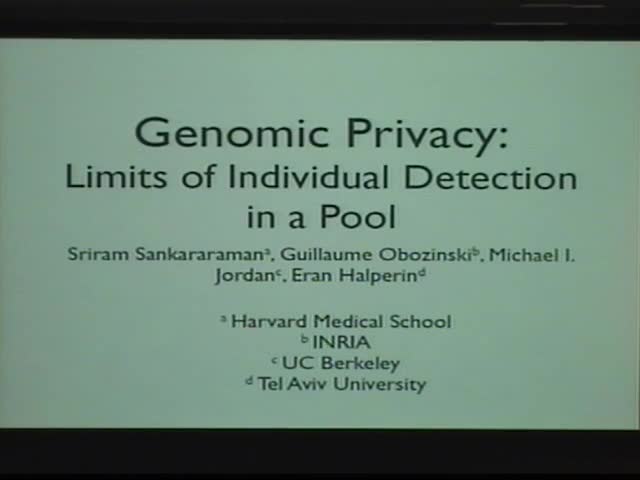Genomic Privacy and the Limits of Individual Detection in a Pool
Presenter
February 15, 2012
Keywords:
- Applied statistics
MSC:
- 97K80
Abstract
Statistical power to detect associations in genome-wide association studies can be enhanced by combining data across studies in meta-analysis or replication studies. Such methods require data to flow freely in the scientific community, however, and this raises privacy concerns.
Till recently, many studies pooled individuals together, making only the allele frequencies of each SNP in the pool publicly available. However a technique that could be used to detect the presence of individual genotypes from such data prompted organizations such as the NIH to restrict public access to summary data . To again allow public access to data from association studies, we need to determine which set of SNPs can be safely exposed while preserving an acceptable level of privacy.
To answer this question, we provide an upper bound on the power achievable by any detection method as a function of factors such as the number and the allele frequencies of exposed SNPs, the number of individuals in the pool, and the false positive rate of the method. Our approach is based on casting the problem in a statistical hypothesis testing framework for which the likelihood ratio test (LR-test) attains the maximal power achievable.
Our analysis provides quantitative guidelines for researchers to make SNPs public without compromising privacy. We recommend, based on our analysis, that only common independent SNPs be exposed. The final decision regarding the exposed SNPs should be based on the analytical bound in conjunction with empirical estimates of the power of the LR test. To this end, we have implemented a tool, SecureGenome, that determines the set of SNPs that can be safely exposed for a given dataset.
